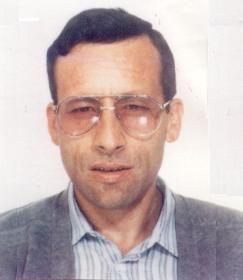Daniel Comboni
Comboni Missionaries
Institutional area
Other links
Newsletter
In Pace Christi
Gasco Alarcon Guillermo
Born at Lajas, Cajamarca, in South-central Peru, he joined the novitiate of Huánuco from the postulancy of Lima; he took his first vows on 3 May 1987 and was assigned to the scholasticate of Rome where he studied theology. After his ordination at 36 years of age he was assigned to Peru, his province of origin, where he arrived in 1992.
Following a long dialogue with the provincial, he decided to continue his pastoral work as a Comboni priest outside the community. On 18 July 1994 he was the victim of a serious car accident that fractured his skull, injuring the encephalic stem, inducing coma and bilateral cerebral injury.
From that day, his home was the Trezza clinic of Lima and then, for the last five and a half years, the hospice for homeless seniors run by religious Sisters. In these places he lived through the last ten years of his life, cared for day and night by the medical staff that, in moments of physical crisis, helped him recover. Four months before his death he developed a kidney infection from which he never recovered. On 1 October 2004, at 5 a.m., in the presence of Sr. Esther who was taking care of him, Fr. Guillermo was freed from his illnesses and returned to the Father’s house, the first Peruvian Comboni Missionary to leave us permanently.
Fr. Guillermo had been a priest for thirteen years, ten of them spent in a coma, practicing a mysterious priesthood by which he offered to God, as a unique offering, the painful condition that limited him, made him totally dependent and nailed to the cross of his illness. He spent ten years on a painful Calvary, chained to a body broken by an accident that did not allow him to have a conscious life.
Many among us have taken notice of the meaningful date that Fr. Guillermo chose to begin his new life: 1 October. The date is meaningful for many reasons both for Comboni Missionaries and for Peruvians: it is the beginning of the mission month, it is the month of St. Daniel Comboni, it holds the feast St. Therese of the Child Jesus, patron of missions and missionaries, it is also the month of the Lord of Miracles, the highest expression of Peru’s popular religiosity. There are few days of the year as laden with meaning as this one. So many coincidences cannot be the fruit of a random happening. It was a day he purposely chose and a gift of the Lord to him to turn this date into a celebration that gives meaning to Gulliermo’s life, so consumed by suffering.
During these last ten years we often asked ourselves whether Fr. Guillermo was ever conscious. We are not sure, but in some instance we think he did. I believe that, in the end, he wanted to answer our uneasiness and, by making an effort to reach 1 October, he had intended to express the mystery of his inscrutable situation and tell us that his life was missionary and that he passed away as a Comboni Missionary.
Death is only a passage from this life to a new, superior and final life. It is the definitive step, when the individual feels its own deepest and radical powerlessness and performs the greatest act of trust in the creative and regenerating love of God. Fr. Guillermo took this step into the next life without human support and explicit awareness. The long illness purified him to the point of depriving him of all support except for the hands of the Father, in whom he took the great leap in a spirit of abandonment and full trust for all eternity.
The funeral Mass was celebrated at the provincial house in Monterrico, with the participation of about 150 people representing the Comboni communities of Lima, local religious Institutes, relatives and friends of Fr. Guillermo. He was buried in the British cemetery of Callao where eight other Comboni Missionaries who gave their lives for the missions of Peru are buried. May our brother Gulliermo rest in peace!
P. Conrado Franco Lorenzo
Da Mccj Bulletin n. 226 suppl. In Memoriam, aprile 2005, pp. 35-39.

